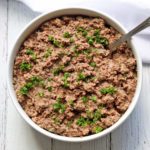
Grandma's Chopped Liver
Chopped liver, the Jewish version of chicken liver pâté, may not be as refined, but it's wonderfully flavorful and easy to make in your food processor.
Servings 8 servings
Calories 169kcal
Ingredients
- 1 pound chicken livers
- 3 large hard-boiled eggs halved
- 4 tablespoons olive oil extra-virgin, divided; or chicken fat
- 1 large onion finely chopped; 8 ounces
- 1 tablespoon fresh garlic minced
- 1 teaspoon Diamond Crystal kosher salt or ½ teaspoon of any other salt, including Morton kosher salt
- ¼ teaspoon black pepper
Instructions
- Place the chicken livers on paper towels to drain. Place the eggs in your food processor bowl.
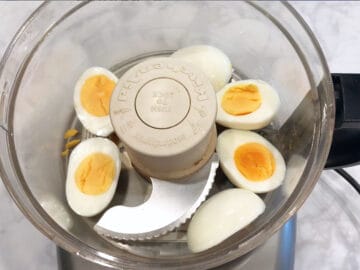
- Heat 2 tablespoons of the olive oil over medium-high heat in a large 12-inch skillet. Add the chopped onion and fry until golden, stirring occasionally, for about 5 minutes.
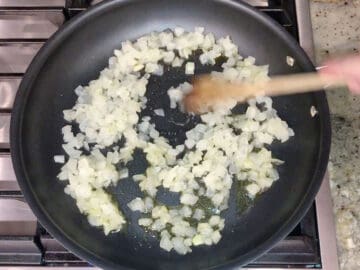
- Add the garlic and cook for a few more seconds, just until no longer raw.
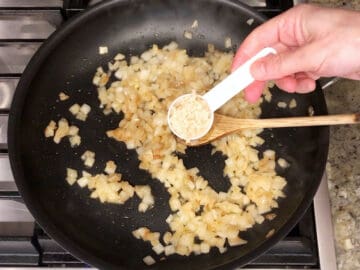
- Using a spatula, transfer the skillet contents, including any remaining oil, to the food processor.

- Add 2 more tablespoons of oil to the skillet. Add the chicken livers and cook them over medium heat (not higher, or they could burst) until brown on the outside and barely pink on the inside, about 3 minutes per side. Overcooked livers are dry and grainy.

- Use the spatula to transfer the skillet contents, including the livers, the oil, and any tasty bits left on the bottom of the skillet, to the food processor.
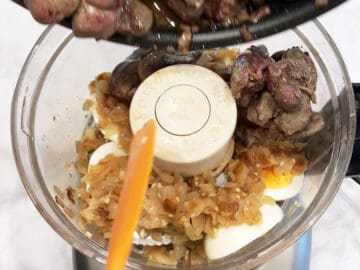
- Add the salt and pepper. Process briefly, about 30 seconds, stopping once to scrape the sides and bottom with a spatula. You don't want the mixture to be as smooth as a liver pate. It should have a bit more texture.

- Transfer the mixture to a serving dish. Cover and refrigerate it for at least two hours, allowing the flavors to meld. Don’t eat it while it's still warm! It won't be very good. It needs time to develop its deep flavor. Its flavor and texture greatly improve after a rest in the fridge.

Video
Notes
- This is my grandmother's recipe. The only change I make is using olive oil instead of chicken fat, but please feel free to use chicken fat if you wish. If you can't find chicken fat, it might be easier to buy duck fat.
- You can trim the white connective tissue and fat from the livers. Although I do this when making sautéed chicken livers, I don't bother doing it when making this recipe. I find that processing the livers in the food processor takes care of any difficult-to-chew bits.
- The CDC says we should cook chicken livers to an internal temperature of 165°F.
- This spread should not be eaten warm. It tastes best after it's had a chance to rest in the fridge, covered, for a few hours, allowing the flavors to meld. But it doesn't keep long in the fridge. Plan to make it the day you serve it, a few hours ahead, and finish it within a day or two. Store it in the fridge in an airtight container.
- You can also freeze it, although it will lose some of its creaminess. After defrosting, add a little more olive oil (1-2 tablespoons) and mix it well to make the spread fluffier.
Nutrition
Serving: 3ounces | Calories: 169kcal | Carbohydrates: 4g | Protein: 12g | Fat: 11g | Saturated Fat: 2g | Sodium: 204mg | Sugar: 1g